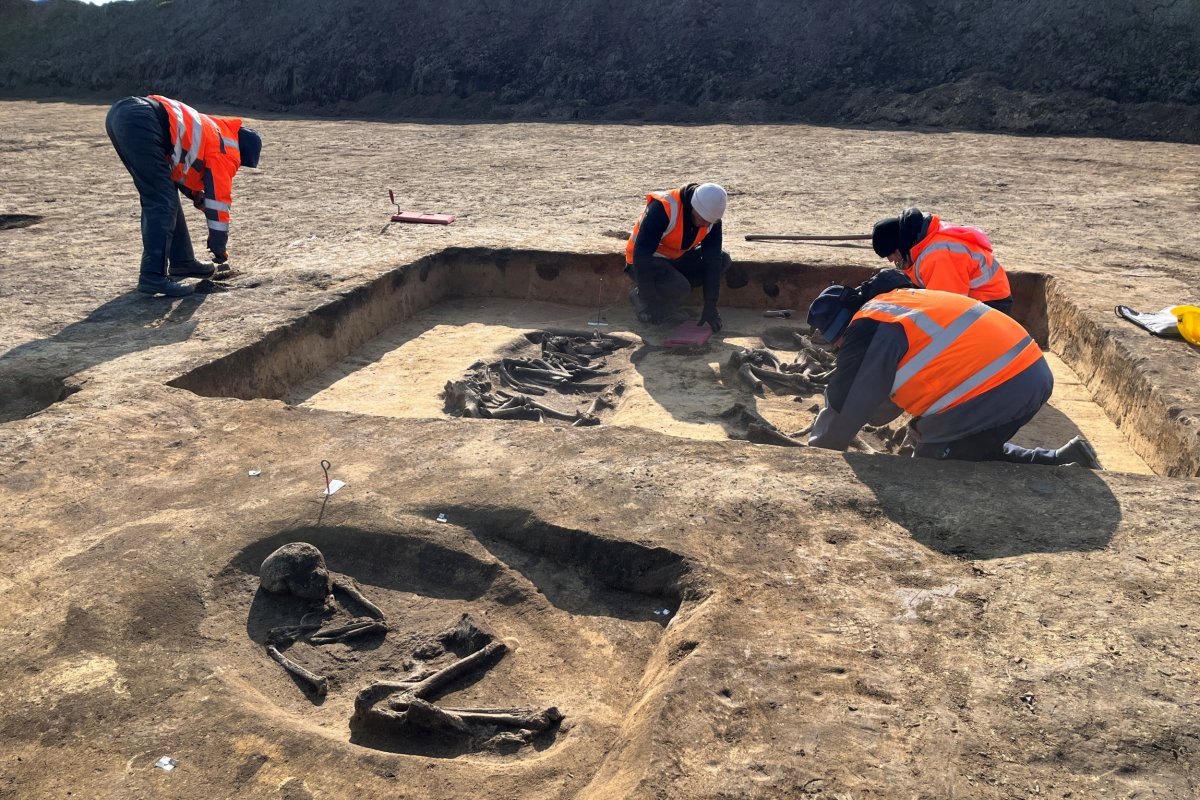Archaeologists have uncovered several prehistoric burials at a site where American technology multinational Intel is planning to build two semiconductor factories.
The site, located in the Eulenberg industrial area near the central German city of Magdeburg, is home to a "complex" burial landscape from the Neolithic period, or New Stone Age, the State Office for Heritage Management and Archaeology of Saxony-Anhalt (LDA) said in a press release.
Its archaeologists have been investigating the area since 2023 ahead of the construction of the Intel plants.
"The findings offer us new insights into the beliefs of prehistoric people," Susanne Friederich, archaeologist with the LDA, told Newsweek.
Among the finds, researchers with the LDA have identified two monumental burial mounds that are thought to date to about 6,000 years ago. The mounds, roughly 650 feet away from each other, were constructed above wooden grave chambers, each containing several burials.

These burial mounds have been associated with the Baalberg culture (around 4100–3600 B.C.) of the Middle Neolithic.
"There were wooden mortuary houses for the deceased on the grounds. They were piled up with earth to form hills that were visible from a distance," Xandra Dalidowski, the excavation manager on site, told German media outlet MDR.
The archaeologists also unearthed another intriguing burial in the area between the two mounds, including one about 1,000 years later.
In this space, the researchers identified the remains of a pair of young cattle, about 2-3 years old, that they said had been sacrificed and buried alongside each other. In front of the cattle, the team found the grave of a 35- to 40-year-old man.
The way that the human and animal remains are arranged creates the image of a driver in a cart or with a plow being pulled by the cattle, according to the archaeologists.
"Our ancestors recreated a scene from their lives here, a team of cattle with the coachman behind them," Friederich told MDR. "They gave the most precious thing to the gods: cattle, the guarantor of life."
This burial is associated with the Globular Amphora culture (around 3300-2800 B.C.), the archaeologists said. These kinds of burials are known from other locations in prehistoric Europe.
"Cattle were the most important livestock for the Globular Amphora culture—their whole subsistence was based on cattle," Friederich told Newsweek. "As such, they were highly valued and very like sacrificed only in dire situations. They are the ultimate gift to the gods."
The researchers found additional burial mounds—associated with the Corded Ware culture (around 2800-2050 B.C.)—that date about 1,000 years later than the cattle burial.
The finds from different periods in the Neolithic suggests an "astonishing" consistency of ritual use of the site, according to the archaeologists. The evidence indicates that the area remained important for prehistoric people for a long period of time.
"The evidence indicates that the Eulenberg remained important for prehistoric people of different cultures for a long period of time, which is quite astonishing," Friederich said. "The different cultures are not necessarily interconnected, but we know of many cases where landmarks left by earlier people were perceived as ancestral landscapes and used for ritual purposes."
Do you have a tip on a science story that Newsweek should be covering? Do you have a question about archaeology? Let us know via science@newsweek.com.
Update 3/28/24, 1:23 p.m. ET: This article has been updated to include additional comments from Susanne Friederich.
Uncommon Knowledge
Newsweek is committed to challenging conventional wisdom and finding connections in the search for common ground.
Newsweek is committed to challenging conventional wisdom and finding connections in the search for common ground.
About the writer
Aristos is a Newsweek science reporter with the London, U.K., bureau. He reports on science and health topics, including; animal, ... Read more
To read how Newsweek uses AI as a newsroom tool, Click here.








